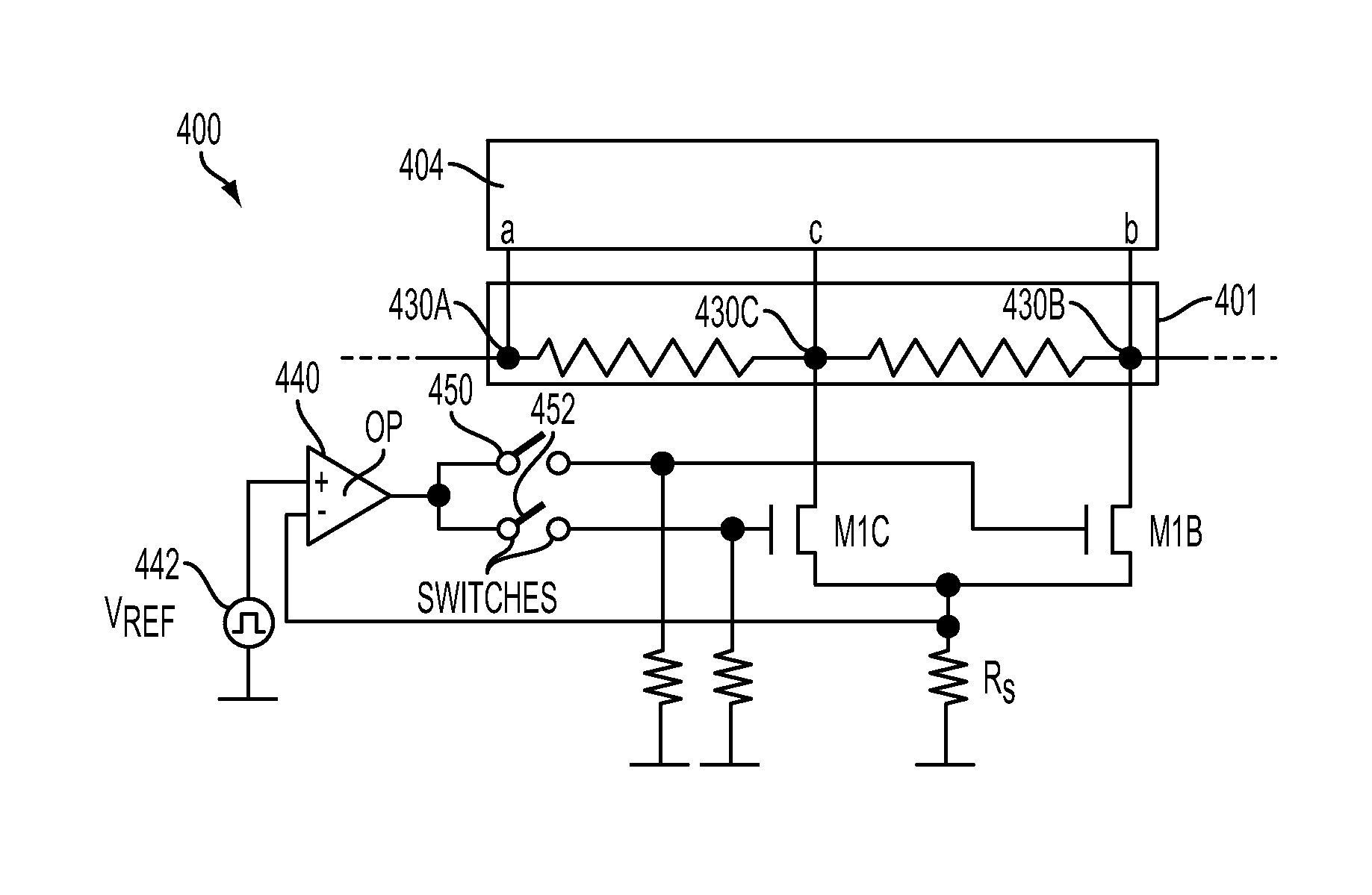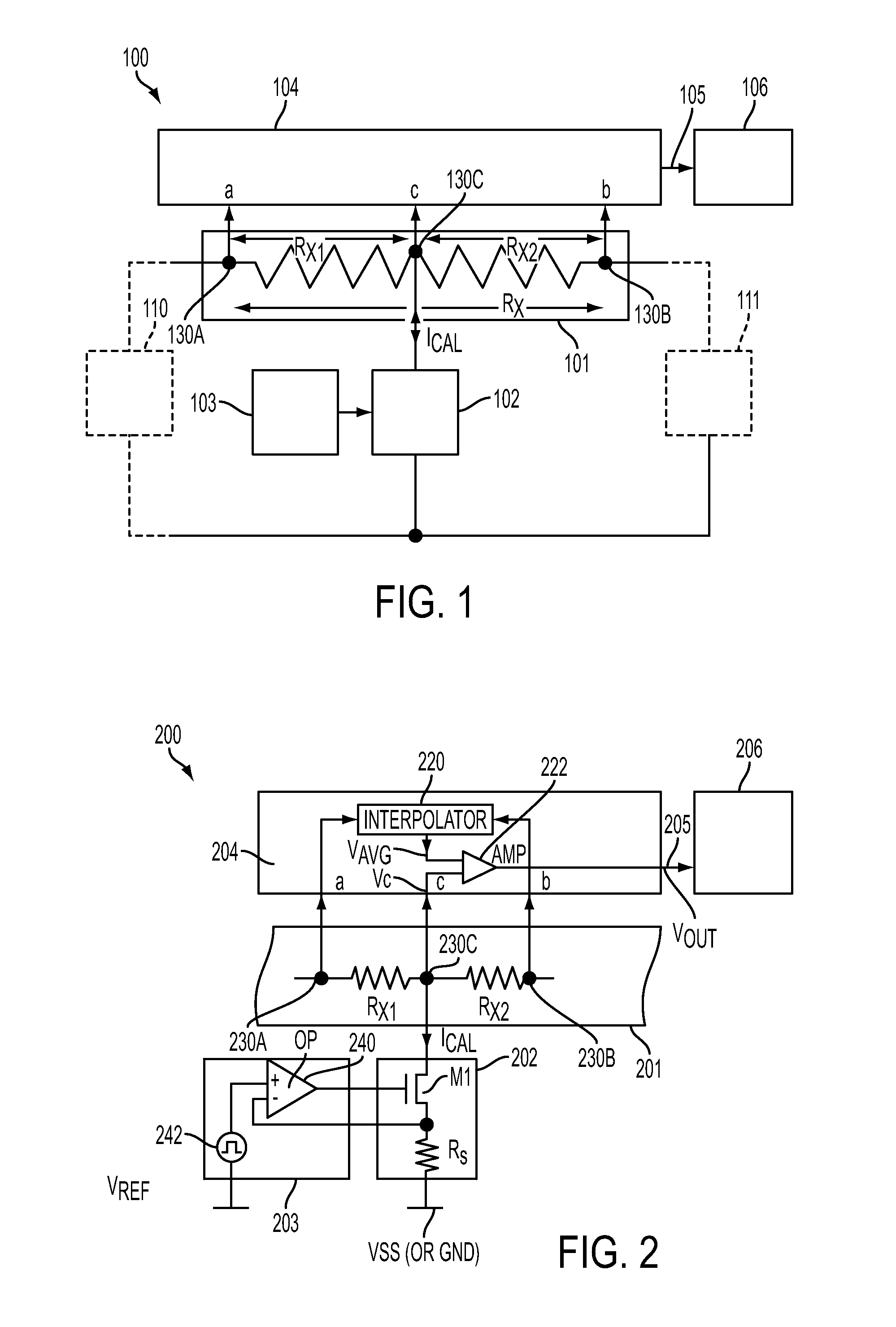Method and system for measuring the resistance of a resistive structure
a resistive structure and resistance technology, applied in the field of electrical arts, can solve the problems of low temperature coefficient, long-term stability, and/or other limitations, and may require sufficiently low manufacturing tolerances of current sense resistors, and methods are unable to compensate for manufacturing tolerances
- Summary
- Abstract
- Description
- Claims
- Application Information
AI Technical Summary
Benefits of technology
Problems solved by technology
Method used
Image
Examples
Embodiment Construction
[0028]In the following detailed description, numerous specific details are set forth by way of examples in order to provide a thorough understanding of the relevant teachings. However, it should be apparent that the present teachings may be practiced without such details. In other instances, well-known methods, procedures, components, and / or circuitry have been described at a relatively high-level, without detail, in order to avoid unnecessarily obscuring aspects of the present teachings.
[0029]The various examples discussed below relate to methods and circuits to measure the resistance of a resistive structure during uninterrupted system operation. Suitable resistive structures, among others, are discrete resistors or parasitic resistances associated with the metal layers of integrated circuits, printed circuit board foil, connection wiring, sheet metal, cable runs, or any other resistances, as long as they obey Ohm's law and have sufficiently low parasitic capacitances and inductan...
PUM
 Login to View More
Login to View More Abstract
Description
Claims
Application Information
 Login to View More
Login to View More - R&D
- Intellectual Property
- Life Sciences
- Materials
- Tech Scout
- Unparalleled Data Quality
- Higher Quality Content
- 60% Fewer Hallucinations
Browse by: Latest US Patents, China's latest patents, Technical Efficacy Thesaurus, Application Domain, Technology Topic, Popular Technical Reports.
© 2025 PatSnap. All rights reserved.Legal|Privacy policy|Modern Slavery Act Transparency Statement|Sitemap|About US| Contact US: help@patsnap.com



